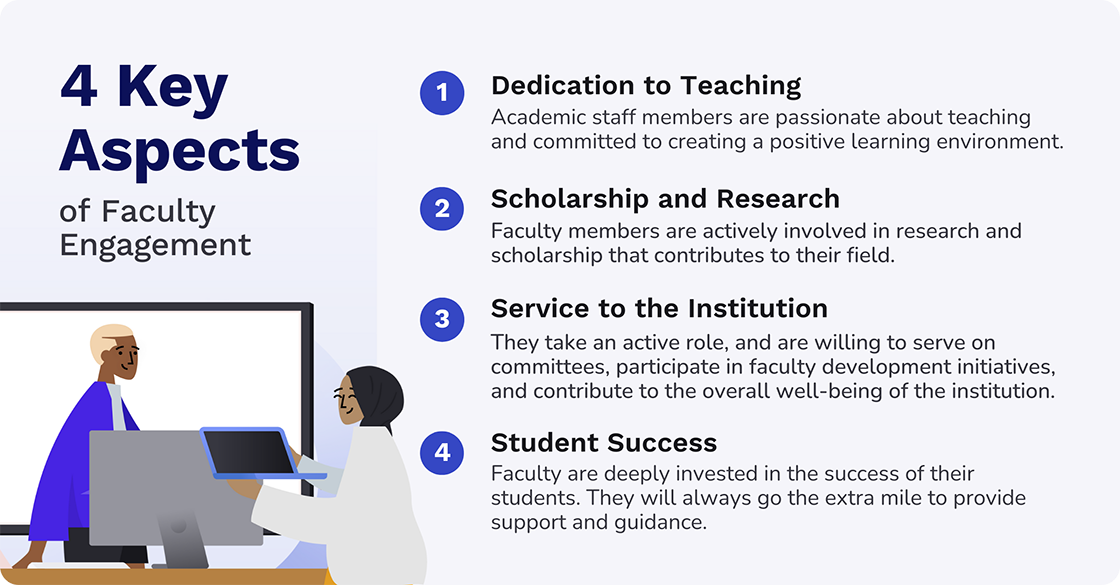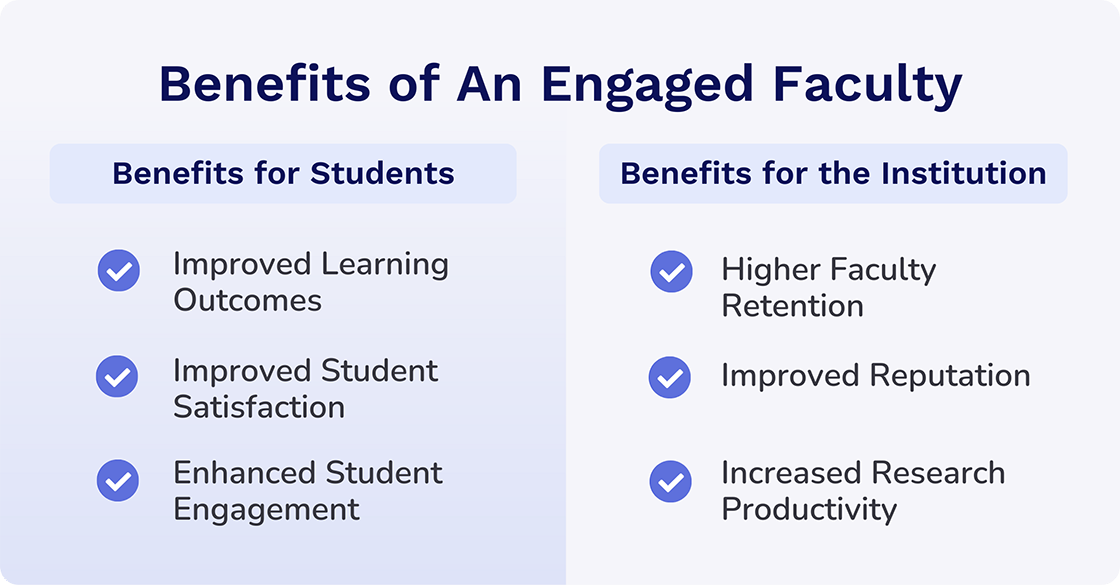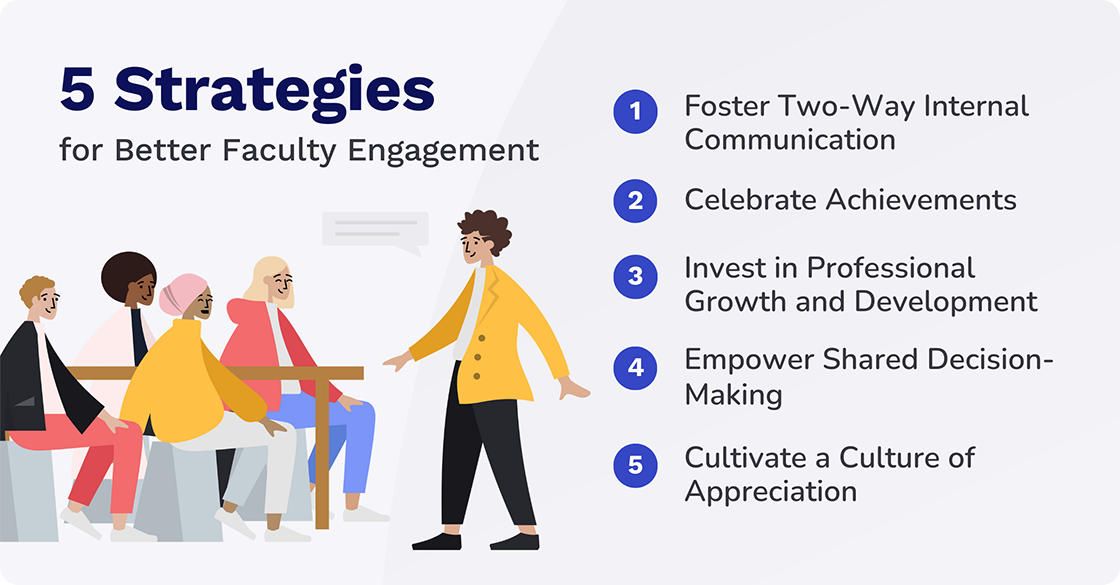Do you recognize the importance of faculty engagement? We’ll show you why it’s a vital element of higher education and how to improve it.

.png)
It can be difficult to know what to include in an employee survey. That’s why we have created a template that you can use for FREE to ensure your employee surveys are engaging. Get the responses that will help you understand your audience.
Access NowFaculty and staff are the lifeblood of any successful higher education institution. But with rising workloads and an ever-changing landscape, engagement can quickly dwindle.
In a Workplace article published in April 2024, Gallop Chief Scientist of Workplace Management and Wellbeing Jim Harter reported that U.S. engagement had hit an 11-year low. In the first quarter of the year, the downward trend of employee engagement continued to drop, reaching the 30% level of 2012-2013. Figures have been dropping since 2020 when the record-high percentage of engaged employees was 36%.
Gallup also has figures for higher education employee engagement. These show that only 34% of university faculty and staff are engaged in their jobs.
“Develop engaged employees who put students first — making your campus the best place to learn.”
Gallup

It doesn’t matter where in the world you are, although differences in culture, language proficiency, and various social issues can make faculty engagement and student engagement a lot more challenging.
A research study published by the International Journal of Applied Research in Social Sciences investigates the critical role of faculty engagement in enhancing the success of international students within higher education settings.
Faculty Engagement in International Student Success: A Review of Best Practices and Strategies warns that higher education institutions face a myriad of challenges when it comes to promoting engagement with international students. But there is also a myriad of opportunities, as the three collaborating authors, Fadeke Atobatele (University of Texas at Arlington), Percy Chris Kpodo (University of North Dakota), and Isabel Obiageli Eke (Department of Education South Africa, Pietermaritzburg) point out. These include experiential learning, international travel, and cross-cultural collaborations.
Overall, they acknowledge that “understanding faculty engagement requires a multifaceted approach that considers the diverse roles, responsibilities, and interactions of faculty members within higher education institutions.”
Craft effective surveys to measure employee sentiment and boost engagement
.png)
The first challenge is to understand faculty engagement and its impact.
Faculty engagement refers to the level of investment, commitment, and enthusiasm faculty members have toward their work and the institution they work for. It goes beyond simply fulfilling job duties and encompasses a deep sense of connection to the student experience and the overall success of the university.
Here are some key aspects of faculty engagement:

Craft effective surveys to measure employee sentiment and boost engagement
.png)
When all the members of a faculty are engaged, everyone benefits.
Benefits for Students
Benefits for the Institution

It’s important to recognize the barriers and challenges that face institutions and their faculty staff. Luckily there are relatively simple ways to improve engagement. Here are 5 key strategies that you can use to reignite the vital flame of engagement:
Transparency and open internal communication are crucial for building trust and fostering a sense of belonging. This is where your internal communication solutions come into play!
Gallagher’s State of the Sector 2023/24 report indicates that engaging teams on purpose, strategy, and values is the top priority of internal communicators in 2024 for 63% of respondents. This represents an increase of 12% from 2023, even though it was still the top-ranked priority then too.
Recognition is a powerful motivator. Be sure to celebrate faculty and staff achievements, big and small.
Faculty personnel and staff members crave opportunities to learn and grow. Invest in their professional development by offering:
A sense of ownership is vital for engagement on any level. Empower faculty staff by involving them in decision-making processes.
Don’t ever forget that empowerment fosters a sense of agency and accountability. This, in turn, will lead to a more engaged workforce.
A simple "thank you" can go a long way. Be sure to regularly express appreciation for the hard work and dedication of faculty and staff. There are lots of ways you can do this.
By implementing these strategies, you can create a more engaged and motivated workforce, ultimately leading to a more vibrant and successful higher education institution. Remember, effective internal communication is the cornerstone of building trust and fostering a positive work environment. By providing the tools and platform for open communication, you'll empower those in the faculty to be their best selves and contribute to the greater good of the institution.

The core of Cerkl’s offering is our automated employee newsletter software. It saves your team time and provides a modern experience for faculty and staff.
Stanislaus State University used Cerkl's AI technology to personalize a newsletter experience for its staff. This newsletter, called StanNews, was filled with university news, career development opportunities, student activities, and other best practices. By personalizing the content, Stan State managed to engage its staff better.
So, how can we help your institution?
Cerkl helps high education organizations increase faculty engagement in a number of ways, including:
Do you know how engaged your faculty staff is? This is an essential prerequisite for a strategy that aims to improve faculty engagement. It can be tricky to assess, but we have made it easy. All you need is our engagement survey. While focused on employees, the parameters are identical for faculty staff. So give it a go. We’ve made it free just for you!
.png)
Craft effective surveys to measure employee sentiment and boost engagement
What is the meaning of faculty engagement? Faculty engagement goes beyond just a teaching job. It's when professors are invested in teaching well, actively conducting research, and dedicated to ensuring their contributions make a real difference to the institution's success.
What are some problems in engaging faculty staff? Common faculty engagement problems include heavy workloads, lack of support for professional development, and feeling undervalued or out-of-touch with institutional goals.
How to increase faculty engagement To boost faculty engagement, institutions can create opportunities for collaboration among colleagues, offer professional development programs, and clearly communicate how faculty work contributes to the institution's mission.

Craft effective surveys to measure employee sentiment and boost engagement